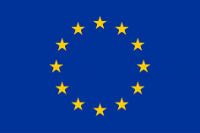PANEL I: SOCIETAL DRIVERS, MEANINGS, VALUES, AND IMPACTS OF CULTURAL PARTICIPATION
Presentations
Diverse understandings of culture and their social correlates: Implications for cultural policy
Semi Purhonen, Marc Verboord, Nete Nørgaard Kristensen, Ossi Sirkka, Višnja Kisić, Goran Tomka, Philippe Bonnet, Susanne Janssen
This presentation focuses on what Europeans think culture stands for and how this differs across societies. “Culture” is omnipresent in contemporary artistic, commercial, media, popular, and scholarly discourses (Brook et al., 2020; Kuipers, 2015; Fornäs, 2017; Purhonen et al., 2019), but how ordinary people from different social backgrounds and national contexts understand the meaning of the concept is largely unknown. Knowing this is important not only because divergent understandings of the concept may create confusion, specially within the cultural policy field (Craik et al., 2003; Gray, 2015; Tomka & Kisić, 2018), but also because different understandings may be indicative of broader hierarchies and conflicts that remain hidden, unless systematically unravelled (Fornäs, 2017; Williams, 1981). By employing a bottom-up approach, this presentation maps these understandings of culture among Europeans – their patterning, mutual relationships, and wider networks of meanings and values. Moreover, it asks how such understandings are associated with major sociodemographic divisions (related to, e.g., age, gender, education, residential area, and religion) within and across the nine European countries. The analysis is based, first, on comprehensive survey data that are examined by digital methods, more concretely topic modelling. Second, the analysis utilizes qualitative interviews in which participants were asked about their understandings of culture. The presentations shows that both narrow understandings of culture (arts, popular culture) and broad understandings of culture (knowledge, group values, national symbols) are found among contemporary Europeans and provides an overview of the social correlates of such understandings, arguing that this under-studied dimension of cultural stratification matters socially, politically, and when rethinking and designing cultural policies (Craik, 2007; Hadley & Belfiore, 2018; Kisić & Tomka, 2022).
Social differentiation in cultural participation: Implications for cultural policy
This presentation provides a social matrix of cultural participation across Europe, adding a comparative, cross-national perspective to existent, mostly single-country analyses of how cultural tastes and practices are shaped by social conditions and divisions (Bourdieu, 1984; Coulangeon & Duval, 2015; Bennett et al., 2009; Hugrée et al., 2022). Advancing on previous comparative studies (e.g., Katz-Gerro, 2011; Falk & Katz-Gerro, 2016), it is examined how popular and everyday forms of culture can be placed in the matrix. The analysis draws on the comprehensive survey data collected within the INVENT project and includes four steps. First, we identify patterns of participation in highbrow, popular, and everyday cultural activities at both the individual country level and the European level. Second, using Multiple Correspondence Analysis, we construct a European map of cultural practices and explore its dimensions, as well as corresponding maps for targeted European countries. The third and main part of the analysis focuses on differences in participation in these cultural activities along multiple axes of inequality (social class, occupation, education) and social differences (gender, age, religious affiliation, urban/rural place of residence) (Bennet et al., 2009; Bonnet, Lebaron & Le Roux, 2015; Chan, 2010, 2019; Yaish & Katz-Gerro, 2012; Kraaykamp & van Eijck, 2010; Lizardo, 2006; van Eijck, 2012). Finally, multi-level analysis is used to examine how macro-level determinants of cultural inequality (a country’s wealth, educational structure, and level of cultural funding) influence differences in cultural participation between the countries in our sample (van Hek & Kraaykamp, 2013; Reeves, 2019).
Societal drivers of unequal opportunities for cultural participation: Implications for cultural policy
This presentation examines how access to cultural participation is shaped by social inequality by comparing data on cultural participation in Europe from before and after the 2008 economic crisis. Recent studies have highlighted the positive effects of cultural participation on well-being (Blessi et al., 2016; Brajša-Žganec et al., 2011; Zbranca et al., 2022), social cohesion (Ariely, 2013; Meir & Fletcher, 2019), trust, openness, and inclusiveness (e.g., Chan, 2019). At the same time, however, cultural participation continues to be associated with mechanisms of distinction and exclusion (Johnston, Baumann, & Olechuk, 2019) and unequal opportunities for different social groups (Jarness & Flemmen, 2019). The drivers of unequal access to culture in Europe and elsewhere have been described at different levels, both within countries (Bennett et al., 2009; Bourdieu, 1984; Coulangeon, 2017; Peterson & Kern, 1996; Tampubolon, 2008) and between countries (Falk & Katz-Gerro, 2016; Gerhards et al., 2013; Purhonen & Wright, 2013). This analysis adds new insights by examining how an economic crisis may impact existent inequalities in cultural access within and between countries, using Eurobarometer survey data on cultural participation collected before and after the 2008 financial crisis. First, we identify the patterns of systematic heterogeneity in cultural participation among European countries and the within-country and between-country drivers of inequality. Next, we analyse how the financial crisis has affected cultural participation in each country, to establish to what extent it has exacerbated inequality in cultural participation. The findings suggest that fostering cultural involvement must be based on policies aimed at reducing disparities in the distribution of cultural and economic resources within countries, providing social and economic stabilisation mechanisms when facing an economic crisis, and enabling a wider variety of social groups to access cultural offerings. This has become even more important in light of the positive effects of cultural participation – both at the individual and societal level – that have been found in recent studies (e.g. Zbranca et al., 2022).


 This project has received funding from the European Union’s Horizon 2020 research and innovation programme under grant agreement No
This project has received funding from the European Union’s Horizon 2020 research and innovation programme under grant agreement No